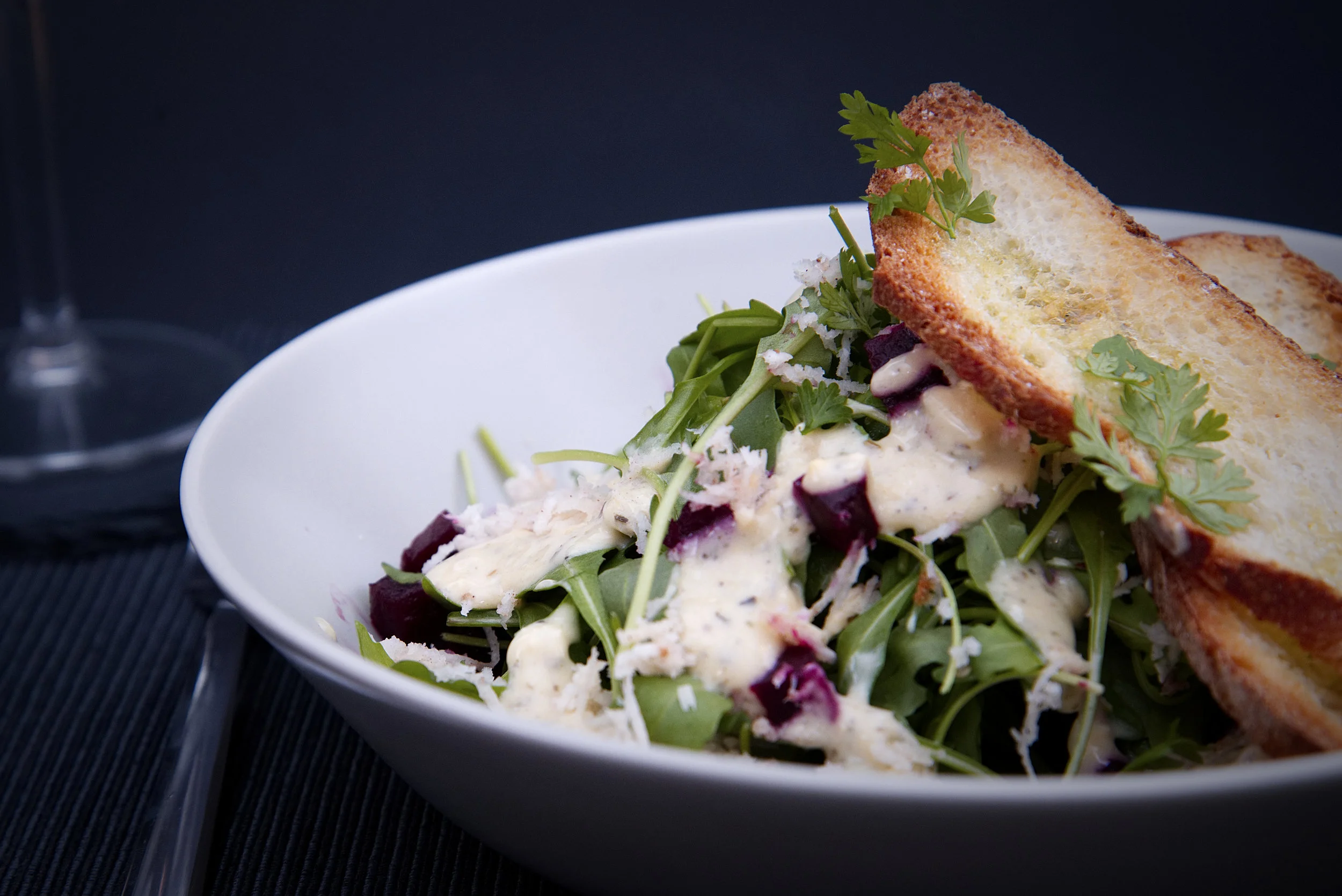Why we have food preferences
I had to cover quite a lot of ground to answer this question, so this is a longer blog than usual. Grab your favourite drink before we start!
The starter
What is taste? In terms of physiology, it’s when something that’s in your mouth reacts with a cell that can detect taste and sends a message to your brain. Cells that detect taste are found in taste buds, inside those little bumps that you can see on your tongue if you inspect it in a mirror.
Roughly speaking, each of our taste-detecting cells ‘specialises’ in one of five flavours: salt, sweet, bitter, sour, or umami. The last of these is a loanword from Japanese that roughly corresponds to ‘savoury’. Though you may have seen maps of the different bits of the tongue that are supposed to be responsible for detecting each of these different tastes, that’s a myth – though there is some variation in sensitivity to different tastes in different places in the mouth, there’s no one area that specialises in anything. We also have taste buds on the other surfaces of our mouth and even in the throat!
As far as researchers can tell, all babies like the same tastes, preferring sweet and salty foods and avoiding sour, bitter and unknown foods (this last one is called neophobia, literally fear of the new). But even here, there’s a bit of individual difference: if you have a lot of morning sickness when you’re pregnant, then your baby will later be more into salty foods than the child of someone who didn’t have morning sickness. The reason for this is that morning sickness tends to make you dehydrated, which can increase the relative level of salt in your body – and because babies like what they’re used to, a baby that’s been in a salty womb, as it were, will want salty foods.
Why do babies like what they’re used to? It’s probably because it’s an evolutionary advantage. Adventurous eaters are at much higher risk of poisoning themselves with a new food than picky eaters, so back when we didn’t have the internet to check things on, they might have died before having children. But fear of the new is on a continuum, with some people liking new foods much more than others. It also works in a cycle, as parents who don’t like trying new foods will probably give their babies a more restricted range of foods than parents who do like trying new foods, and if those babies later become parents, they will probably repeat the same behaviours with their own children.
The main course
So we’re born with some basic preferences – but by the time we’re adults we tend to have much more specific preferences. For example, though they’re both bitter, I love cauliflower but I find rocket (hello, Americans, that’s arugula to you) absolutely vile.
How did I get to this point from disliking almost all bitter tastes?
Initially, we tend to learn preferences by figuring out the context and consequences of eating certain foods. Context can come from a variety of sources, like cultural norms around what is and isn’t food. For example, like many people in Britain, I would prefer not to eat horse meat, though I know it’s common to do so in some other countries. Context can also come from behaviours picked up from family and friends about when and whether foods are consumed. For example, I don’t buy chocolate breakfast cereals because 7.30am just isn’t when I eat chocolate, though I’ll happily eat it in the afternoon or evening.
Consequences of eating food can be immediate, with some of them coming from the people around us, like pleasure that you are enjoying something they’ve made or (please do not do this) commentary on whether what you are eating is ‘healthy’ or not. There are also consequences within our own bodies, like how satisfying we find the food or whether it makes us sick. Again, this is probably a good thing from an evolutionary point of view: if you’re sick after eating something, it could be poisonous or you might be allergic to it. Either way, you’re unlikely to want to eat it again.
The small and very worthwhile downside to not dying from eating things that make us ill is that sometimes we’re ill for reasons that aren’t related to the food. For example, though I used to enjoy haggis, I find the thought of it revolting now, because my nephew infected me with a stomach bug shortly before I last ate it and, well, that is why I was covered in haggis vomit when I met my partner’s family for the first time. Even though the haggis was blameless, I still don’t want any more.
From these kinds of factors, we slowly start to build up a set of unique likes and dislikes as children, helped along by something called the mere exposure effect, which is basically that the more we encounter something the more we like it. (Yes, this is quite likely part of how we make friends.)
The effect of mere exposure is so strong that if you’re trying to get a child to like a food they currently dislike, you’re probably better off repeatedly giving them the food to try than you are bribing them to eat it with a reward! Unfortunately, embedding advertisements for certain foods in cartoons also causes the mere exposure effect to happen in children, and advertisers are usually more interested in selling their product than trying to get a child to eat, say, a broad selection of foods that offer a range of different nutrients. On a more(?) hopeful note, we might also be able to use mere exposure to alleviate some of the problems caused by climate change, overpopulation, and so forth. Yes, that’s right, we’re probably going to need to use insects as a source of protein. Fortunately, it seems that once you persuade non-insect eaters to try eating insects, they become a lot happier about doing it again in the future. Good news for me and other hypocrites who will happily eat prawns but balk at crickets!
The dessert
It’s not just about exposure to food, though. Though we can never truly experience what another person is perceiving, it seems pretty obvious to me that rocket must taste quite different to other people from how it tastes to me, because surely not everyone wants their salad to taste overwhelmingly bitter.
The explanation for this overwhelming bitterness lies in my tongue rather than my brain. Back when I was doing my PhD and did not have a lot of money, I often took part in people’s psychology experiments for small monetary rewards, thus alleviating my financial woes while simultaneously contributing to the WEIRD problem. In one of these experiments, I was given a substance called 6-n-propylthiouracil (thankfully usually known as PROP) and asked to taste it. It was revolting, like tonic water with the bitterness turned up to 11. “Aha!” said the researcher running the experiment. “You’re a supertaster. Here, have a jellybean, it’ll help take the taste away.”
‘Supertaster’ sounds pretty fancy, but it just means that I have more tastebuds, or perhaps more sensitive tastebuds, than people who aren’t supertasters. As a result, I can taste PROP, but to many other people it has a faint taste or no taste at all. Supertasters aren’t particularly rare, but the number of people who can taste PROP varies quite widely depending on the specific group you’re looking at: most children, more women than men, 60% of adult Indians, 70% of adult white Americans, and 97% of adult West Africans.
Because supertasting makes bitter things taste more bitter, sweeter things taste sweeter, and chilli things taste hotter, differences in the number of supertasters in a population probably also explain quite a lot about different cultures’ food preferences. It may also explain kids’ stereotypical aversion to eating their greens, because supertasters tend to dislike cruciferous vegetables like broccoli, turnip and, yes, fucking rocket. Surprisingly, this might also be an evolutionary advantage, because even though they’re full of useful things like vitamins and fibre, if you eat them in large enough quantities, cruciferous vegetables can really mess with your thyroid.
The after-dinner drink
Supertasters are also more sensitive to the textures of foods than other people. For me, this comes out as a love of textural contrasts like the one between the tea and the boba in bubble tea, and a strong aversion to some pizzas, specifically because I do not like the way that mozzarella and tomato sauce feel together in my mouth. If you are now making a horrified gasping sound at my dislike of this combo, I have four words: more pizza for you.
The texture of food is really important – here are just some of the ways it can help determine whether we want to eat a food or not.
Texture is a really good indicator of freshness and therefore how safe a food is to eat – you don’t want slimy apple, for example, or hard cake.
People are often put off by stringy foods, or ones with unexpected lumps, since they can be a choking hazard. This is especially the case for people with few teeth or week jaw muscles, like babies and older adults.
Poorer people and women tend to be more self-conscious than richer people and men when they are eating, so may be less likely to try foods with difficult-to-eat textures.
We can learn to like new textures, just as we can learn to like new tastes! This is relatively easy if you are rich and can afford to try new things without risking going hungry if you don’t like them. If you are short on money and want to try a new food, don’t do it at breakfast – when we’re usually most hungry and just want to get food inside us. The best time is later in the day and especially if you’re having a multi-course meal (like a main course and a dessert), because you’re less likely to go hungry if you don’t like one course.
The bill, please
To summarise: food preferences are determined by lots of factors including age, gender, wealth, childhood experiences, whether you’re a supertaster, and how often you’ve been exposed to the food in question… so really, it’s more surprising when people do like the same foods than when they don’t!





